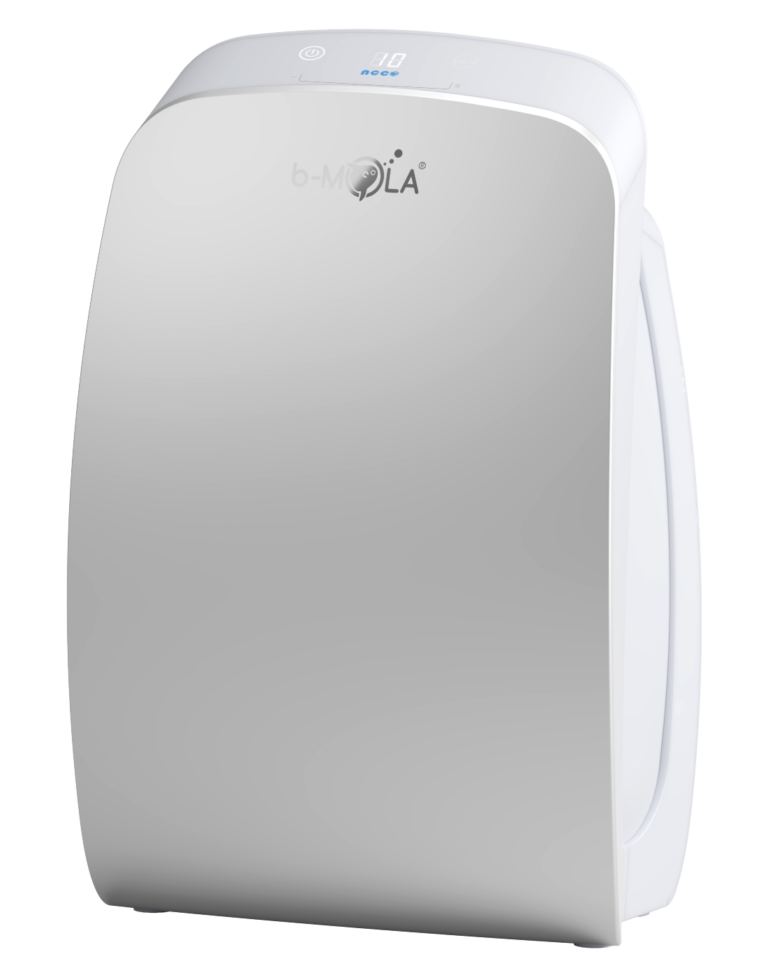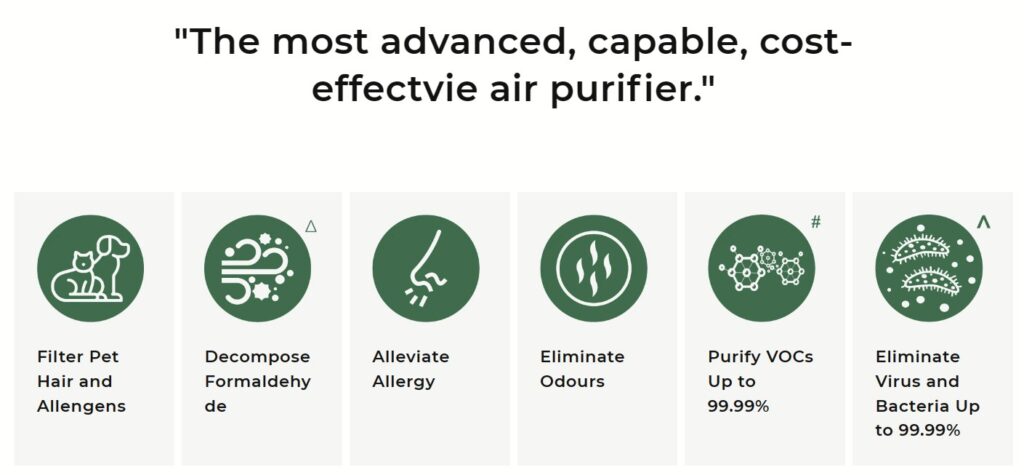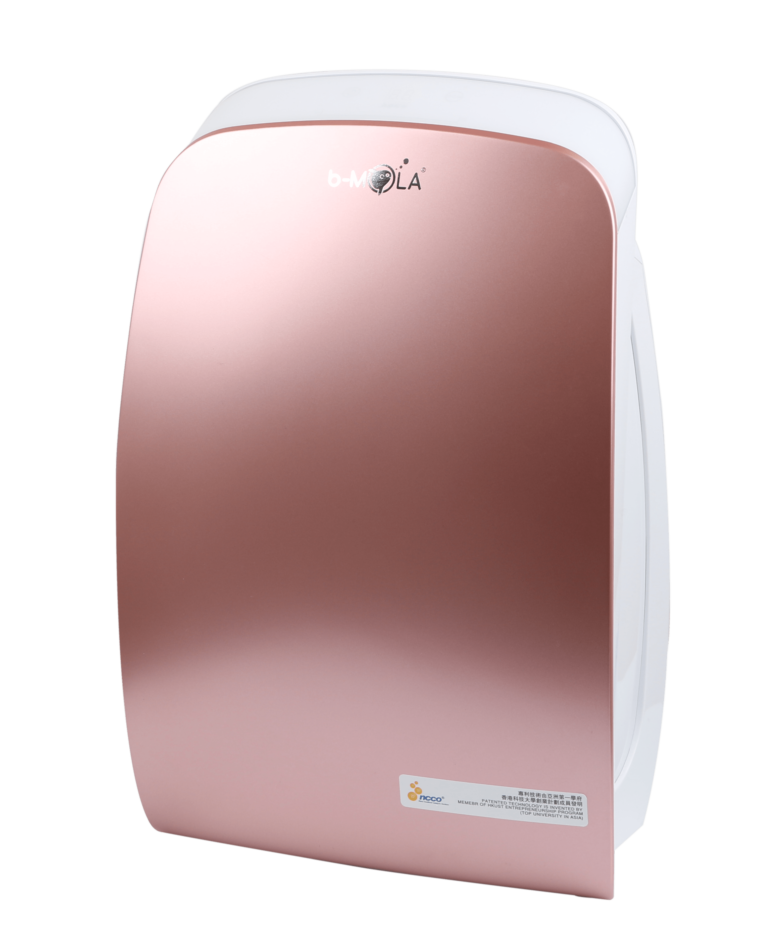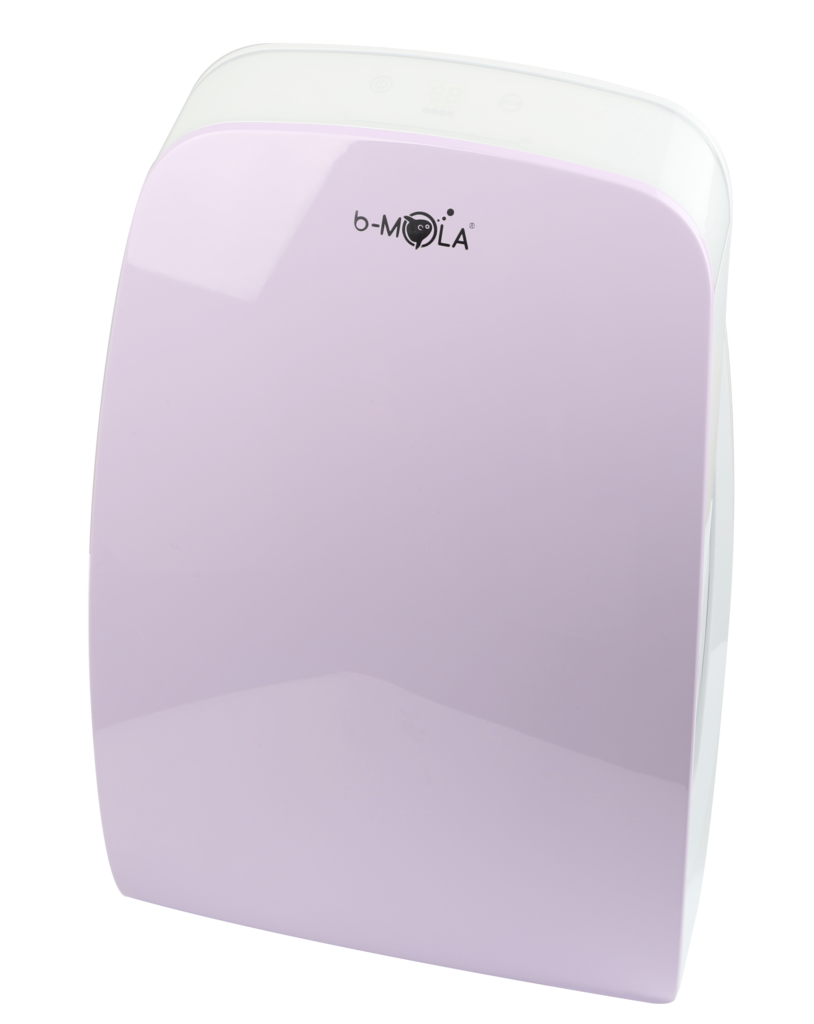




b-MOLA Air Purifier NCCO 1701

The b-MOLA NCCO 1701 features a cutting-edge 4-stage filtration system designed to ensure clean, sanitized air in your home:
- Pre-Filter: Captures large particles like dust and pet hair.
- Active Oxygen Generator: Effectively kills bacteria and viruses.
- True HEPA Filter: Traps solid pollutants such as smoke, mites, and pollen.
- Patented NCCO Filter: Decomposes odors, harmful gases, and VOCs (volatile organic compounds).
Unlike traditional purifiers that simply trap pollutants, the b-MOLA NCCO 1701 destroys 99% of harmful elements in the air, releasing only sanitized air for you to breathe.
Experience cleaner air and a healthier home with the b-MOLA NCCO 1701!
NCCO 1701 FEATURES


PRODUCT DETAILS
| Power Consumption (W) | 8W – 20W |
| Rated Voltage (V) | 110V-240V |
| Power Supply Rated Frequency (Hz) | 50Hz – 60Hz |
| Airflow Volume(m3/h) | <40 – 130 m3/hr |
| Noise Level(dB) | 34 – 57 dB |
| Product Dimension(mm) | 292 (L) x 174 (W) x 441 (H) |
| Net Weight(kg) | 4 kg |
Pre-filter | Static Filter | Active Oxygen Generator + HEPA Filter | NCCO Reactor Multiple filtrations - brings you fresh and clean air

*NCCO technology has been tested by the Representative Machine (BM300) and has been confirmed to be effective in killing up to 99.99% of the new crown virus.
^Commissioned a third-party laboratory to test and tested for the removal of human coronavirus, influenza virus and bacteria from selected air purifiers according to the 2002 edition of the Technical Standard For Disinfection -2.1.3 and GB-21551.3-2010, the results may vary depending on the situation.
#Tested by Arcon laboratory, volatile organic compounds (VOCs) such as acetaldehyde, acetone, benzene and acetic acid are discharged into a 1000L test box, and the selected model of air purifier is tested for removing volatile organic compounds. Results may vary from situation to situation.
△ Leung. Amy, and Ezra Kwok, “Evaluation of the Nano-Confined Catalytic Oxidation Technology for Air Purification and Odor Reduction. * Advanced Materials Research, Vol, 550, 2012, University of British Columbia.






